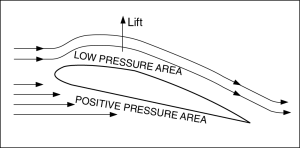I hope everyone had a great weekend and got a chance to spend some time looking over Thursday’s questions, let’s see how you did.
1. When do the four forces that act on an airplane in equilibrium?
A—During un-accelerated flight.
B—When the aircraft is accelerating.
C—When the aircraft is at rest on the ground.
In un-accelerated (steady state) flight the opposing forces are in equilibrium. Answer (B) is incorrect because thrust must exceed drag in order for the airplane to accelerate. Answer (C) is incorrect because when the airplane is at rest on the ground, the only aerodynamic force acting on it is weight.
2. What is the relationship of lift, drag, thrust, and weight when the airplane is in straight-and-level flight?
A—Lift equals weight and thrust equals drag.
B—Lift, drag, and weight equal thrust.
C—Lift and weight equal thrust and drag.
Lift and thrust are considered positive forces, while weight and drag are considered negative forces and the sum of the opposing forces is zero. That is, lift = weight and thrust = drag.
3. Which statement relates to Bernoulli’s principle?
A—For every action there is an equal and opposite reaction.
B—An additional upward force is generated as the lower surface of the wing deflects air downward.
C—Air traveling faster over the curved upper surface of an airfoil causes lower pressure on the top surface.
Bernoulli’s principle states in part that the pressure of a fluid (liquid or gas) decreases at points where the speed of the fluid increases. In other words, high-speed flow is associated with low pressure and low-speed flow with high pressure. Air traveling faster over the curved upper surface of an airfoil causes lower pressure on the top surface.

So this last question was not easy and required you to do a little research on your own. If you take a look at the figure above you can see how the pressure decreases proportional to the increase in velocity through the constriction of the tube. This entire principle is so important in aerodynamics because its theory explains how a wing can produce lift. As a wing cuts through the air the upper surface or chamber creates a higher velocity of air then does the lower surface. If you use your imagination for a moment and cut the top half of the tube off you can almost visualize the bottom portion as a wing. The figure below shows how the increase in velocity of air over the upper wing chamber causes a low pressure area, while below the wing you have a high pressure area or positive pressure. This difference in pressure directly contributes to lift.

Now you know just a little more about how an airplane creates lift, Bernoulli’s principle is just one part of this but it is an important part. I encourage you to spend some time on the subject of aerodynamics and learn all you can early on. This is a subject that you will be continually learning throughout your flight training and aviation endeavors.




